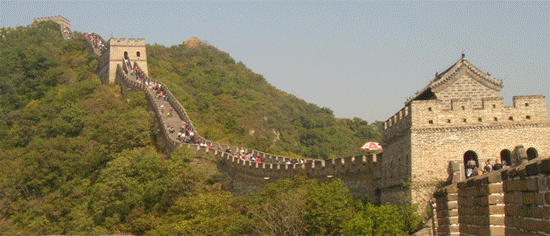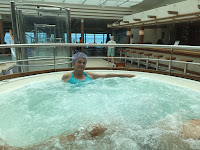SHORE TOURS
This cruise experience has been a little different for us in terms of shore tours which are usually organised for every cruise ship as they call in to the ports they visit. Of course, these shore tours are an added cost and not included in the original cruise fare. Because we had previously visited all of these ports, we elected to book no tours. Now, that raises an issue in which we have identified some significant changes to past cruise practices.
It was once common practice for cruise lines to organise a free shuttle (bus) into the town of ports visited. The shuttle would perhaps take twenty minutes ferrying passengers into the city or township and run return trips every half hour or so. So, those who did not want to do an organised tour, for whatever reason, at least got the opportunity to see a little of the local area and add to its economy. Now, if a shuttle is provided, it is an added cost. A shuttle into Brisbane city will cost a couple $50. Perhaps a taxi into Brisbane from the Grain Terminal Wharf would cost that amount; but the point is that when ships dock in isolated ports, cruise lines have a responsibility not to leave passengers stranded where they cannot walk off to a destination of some interest. Now, I make this criticism within a broader observation that the cruise industry is changing as we have experienced it over twenty years.
 |
| Majestic Princess at Dock |
Let me put this in another context. Do you recall a time when taking a plane flight, particularly an overseas flight, was an exciting experience with a sense of romance or adventure? It was relatively expensive and even an occasion where one dressed up in finery with high expectations of good times to come. There was fine dining on board with real cutlery and free alcohol. Today a plane flight is relatively cheap as economies of scale were introduced; but the experience is little better than a bus trip. The seats have been squeezed closer and closer together until those of us of average height and weight feel like being crammed into an egg crate; and as you take your seat with a spare one beside you, you hope that that this 150kg man waddling up the aisle is not your bedfellow for the next sixteen hours. Personally, I find long overseas flights a punishment I didn’t deserve!
SQUEEZING OUT THE DOLLARS
From my observations, the cruise experience is floating in the same direction as air flights . As its popularity has increased, more ships are being built or refurbished, cruise prices are coming down, and the dollars are being squeezed from the passenger in a multitude of ways. The free shuttle bus is one such change and those who are new to cruising accept there will be an additional cost to get to King George Square in Brisbane. But, what is happening here is not that the cost of a shuttle bus is being defrayed but this is another opportunity for the cruise company to add to the profits.
 |
| Tendering Passengers Ashore |
There are numbers of examples of this kind that we have noted. For example, previously when one left the ship on a shore excursion, a bottle of water was handed to each passenger. Now, you will pay for it at a price that is clearly for profit. At one time, passengers were allowed to bring bottles of wine on board and, while the amount was restricted at each port of call, it is now not allowed to be brought on at all. Of course, this is to encourage you to purchase alcohol on board. We recently got off the water wagon and lashed out for a bottle of Malbec for $42. One can purchase a beverage package for unlimited wine (not spirits) at $87 a day (each). Needless to say we quickly became teetotalers.
Feeding the 3500 passengers on this ship clearly provides an opportunity for the bean-counters to manage costs. Let’s say you came upon a strategy to save an average of $10 per customer over the length of a 20 day cruise; that’s 50 cents a customer per day saving $35,000. Our banks were experts at this strategy - say, 2 million customers, charge bank account fee of $50 twice a year, equals a cool $200 million, for doing nothing other than setting up an electronic bank account! (Charging dead people was another strategy!) For cruise ships, there is a lot of low-hanging fruit to cull
Now, complaining about the quality and variety of food on a cruise ship is a rather common theme among passengers. Like early aeroplane flights, our first experiences of the evening meal were like regularly attending a Michelin restaurant. It really was a fine dining experience. On today’s cruise ships you pay for fine dining in specialty restaurants as you would on shore and the costs are largely comparable. That is not to say that quality meals are not provided in the regular ship restaurant with silver service and attentive waiters. But if you want lobster-mornay or bomb-Alaska or New York Steak or specialty Asian or French dishes, make a booking at the appropriate restaurant! There is a theory among the passengers that, if they gradually reduce the variety and number of options on the menu, people will gravitate towards the pay-for options. There’s always a conspiracy theory!
On the one hand, we are very privileged to enjoy all that a cruise ship has to offer. We are waited on with endless patience by young men and women largely from under-developed countries. We eat large quantities of high quality food that their families could only dream of. And we complain that the menu is limited, the food was not hot, or “you never serve apple strudel” or the price of a bottle of wine is exorbitant.
On the other hand, the passenger has paid his money, has certain expectations (perhaps based on previous experiences), and feels he is being short-changed. Today we met such an ugly Australian who complained endlessly about the food and the washing machines; and at lunch, we sat with an ugly American from LA who will be angrily writing to Princess Cruises about the quality and variety of food.
It is a difficult dilemma - to complain or to appreciate the opportunity; or perhaps just to keep your mouth closed, particularly when eating lobster in the Concerto Restaurant!
 |
| With a Waiter to Extract the Meat from the Shell |

























































